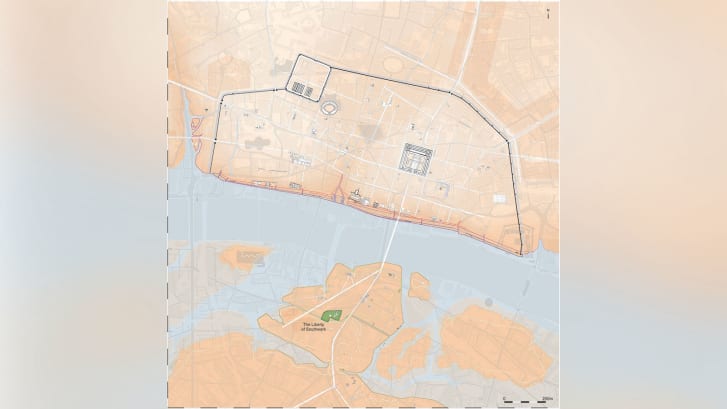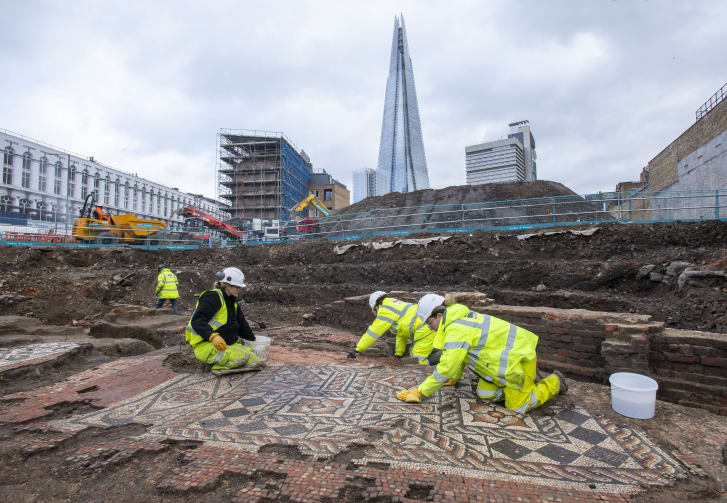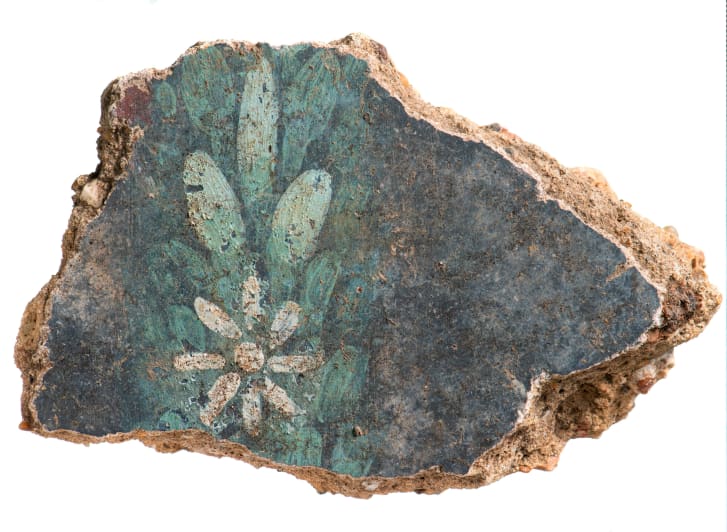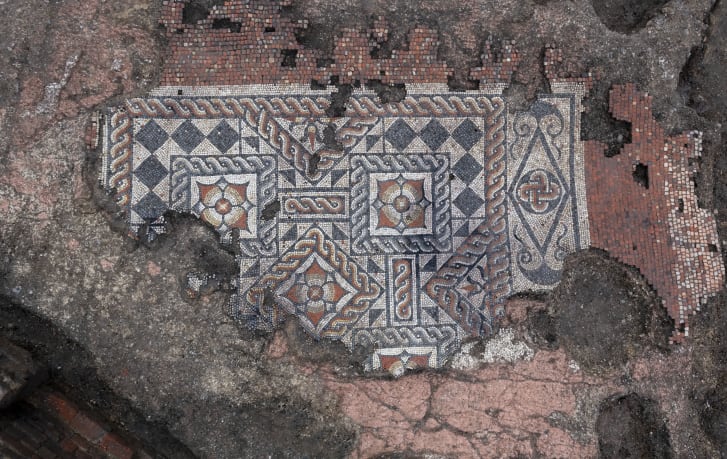London's largest Roman mosaic in 50 years
A large area of well-preserved Roman mosaic -- parts of it approximately 1,800 years old -- has been uncovered in London near one of the city's most popular landmarks.
The mosaic is thought to have adorned the floors of a Roman dining room, and the spot where it stands is near the Shard -- the capital's tallest building, close to London Bridge.
Archaeologists
from the Museum of London Archaeology (MOLA) unearthed the mosaic
earlier this month during an excavation ahead of building work due to
take place on the site, which previously served as a car park.
The
find is the largest area of Roman mosaic to have been discovered in
London in at least 50 years, according to a press release from MOLA.

A map of Roman London as it once stood. Credit: Ordnance Survey/MOLA
"It
is a really, really special find," Sophie Jackson, MOLA's director of
developer services, told CNN Wednesday, adding that large Roman mosaics
were not often built in London due to it being a "crowded" city.
"It is just incredible that it's survived," Jackson said.
"To
actually to have a whole big spread of mosaic like that in a definable
room -- we think it's a dining room -- is really amazing. And it looks
really nice as well, it's just really pretty, actually."

MOLA archaeologists at work on the mosaic near the Shard. Credit: Andy Chopping/MOLA
The
dining room where the mosaic was found is thought to have been part of a
Roman "mansio," or "upmarket 'motel' offering accommodation, stabling,
and dining facilities," the team said in the press release. The lavish
decorations and size indicated only "high-ranking officers and their
guests" would have stayed there.
The
mosaic itself is comprised of two panels, with the larger dating to the
late 2nd or early 3rd century AD. However, the team spotted traces of
an earlier mosaic underneath, which Jackson said an expert will now
attempt to retrace and reconstruct.
The
larger panel is decorated with "large, colorful flowers surrounded by
bands of intertwining strands" and patterns including a Solomon's knot
(a looped motif). The smaller one has two Solomon's knots and "stylized
flowers," the press release added.

An early Roman decorated wall plaster found during excavation. Credit: Andy Chopping/MOLA
As
there is an "exact parallel" to this design in a mosaic found in the
German city of Trier, the team believes the same artists worked on both,
suggesting a tradition of "traveling Roman artisans at work in London."
Describing
the placement of the mosaic, Jackson said: "The people -- probably men
in this case -- would be lying on the couches, leaning on their left
shoulders, eating, being fed food, and looking south into the bigger
room, sort of admiring the mosaic."

The mosaic would have once stood in a dining room, experts said. Credit: Andy Chopping/MOLA
Near
the spot where the mosaic was found, the team also found traces of
"lavishly" painted walls, terrazzo-style and mosaic floors, coins,
jewelry and decorated bone hairpins, suggesting the area was occupied by
wealthy inhabitants.
Although
the mosaic's future is not yet decided, Jackson said it will likely go
on public display. The archaeologists will now proceed to the final
stage of the excavation, at a spot that has not previously been examined
Comments
Post a Comment